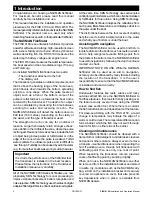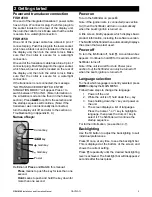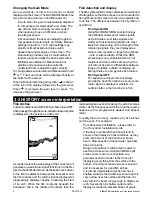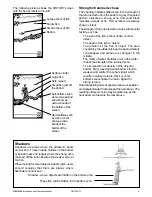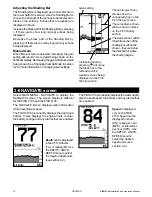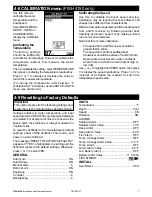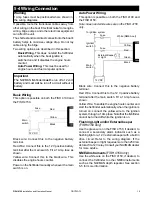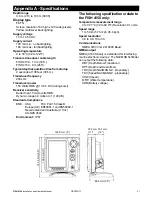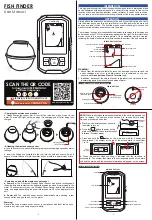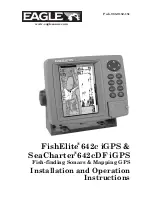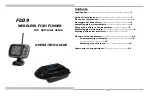
FISH 4100 Installation and Operation Manual
NAVMAN
9
The following picture shows the HISTORY screen
with the fish symbols turned off:
Large school of fish
Single fish
Small school of fish
Bottom
Strength of returned echoes
The shading indicates differences in the strength of
the returned echo from the bottom. A grey chequered
pattern indicates a strong echo and solid black
indicates a weak echo. Fish symbols are always
shown in black.
The strength of the returned echo varies with several
factors, such as:
·
The size of the fish, school of fish or other
object.
·
The depth of the fish or object.
·
The location of the fish or object. The area
covered by the ultrasonic beam is approximately
cone-shaped and echoes are strongest in the
middle.
·
The clarity of water. Particles or air in the water
reduce the strength of the returned echo.
·
The composition or density of the object or
bottom. Mud, weed and sand bottoms tend to
weaken and scatter the sonar signal, which
results in weaker returns. Rock or coral
bottoms concentrate the return signal for
strong returns.
Note that planing hulls at speed produce air bubbles
and turbulent water that bombard the transducer. The
resulting ultrasonic noise may be picked up by the
transducer and obscure the real echoes.
Shadows
Shadows are areas where the ultrasonic beam
cannot ‘see’. These include hollows on the bottom
or beside rocks and ledges where the strong echo
returned off the rock obscures the weaker echo of
the fish.
When looking for small objects including fish, users
should consider that there are places where
fishfinders cannot ‘see’.
These fish will be hidden in the bottom echo.
Shadow - where objects are hidden in the bottom echo.
Surface clutter
Hard bottoms such
as rock or coral
show as wide
bands at the
bottom of the
screen
Soft bottoms such
as mud, weed and
sand show as
narrow bands at
the bottom of the
screen
Small fish just off
the bottom
Kelp / weed
Large fish




